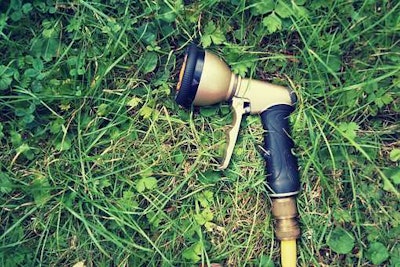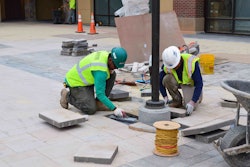It can sometimes be hard to tell the hydration status of a tree in your customer’s yard. They can easily be under or overwatered, and most times the problem escalates until it’s too late to treat it.
One quick and easy way you or your customer can check the water status of a tree is to take a long screwdriver and stick it in the soil below the tree. If it’s difficult to do this, the tree definitely needs more water.
 Photo: Pixabay
Photo: PixabayAnother way to check is to dig 6-8 inches deep into the soil below the tree and get a handful of soil. The soil should be cool and moist. If it’s drenched, then the tree is being overwatered, and if the soil is sandy, roll it into a ball. If it then crumbles, your tree is in need of more water.
Trees give off subtle clues that are easy to spot if you know what to look for. Take a look at the signs of over and underwatering to see if your customer’s trees are experiencing either condition.
Overwatering signs
If you see that the area around the bottom of the tree is always wet, overwatering may have occurred.
Take a look at new growth around the base of the tree as a good indicator of this as well. If new growth withers before it’s fully grown or becomes slightly yellow or green, there is too much water present.
Watch leaves carefully as well. They may look like they are green, vibrant, and healthy, but if they break easily and are overall fragile, they can be suffering from too much water.
Underwatering signs
When you spot trees that have curled or wilted leaves that may be turning brown at the edges or tips, you might have some underwatered plants.
Sparse canopies that are off-color and have undersized leaves, yellowing leaves, or scorched leaves are also major tell-tale signs of dehydrated trees.
Check the seasons as well. If you see trees prematurely dropping their leaves or turning their fall colors early, underwatering could be the culprit.
When making your rounds with customers, always take time to check in on all the foliage in the landscape. If you see trees are going un-watered for long periods of time, talk to your customers about creating a watering schedule. This is especially important for customers who live in more drought-prone areas or dryer climates. Remember that trees prefer to be watered "deeply" as their roots often extend far down into the soil. If a sprinkler is being run in the yard, the lawn is likely using up that water. Clients may require a soaker hose specifically for watering their trees.
How to fix, save overwatered trees
When trees are overwatered, they are struggling to breathe because the excess water takes over the air pockets that they previously had. This creates a problem because the tree’s roots are getting too much water and not enough oxygen, which can lead to root rot, long-term tree stress, or fungi.
If you see that a tree is overwatered, just stop watering it temporarily. Give it about a week or so, depending on the severity of the accumulated water, and simply let it dry out. Before you water it again, do the screwdriver test, and only water the tree where it needs it.
If you find that the soil under your customer’s tree is mainly clay, try mixing in compost to help the soil drain better.
Be sure to inspect the trees after it rains to see if and where the water is pooling. Check to see if the water is running down a hill and pooling at the base of the tree or if a rain spout is emptying near the tree.











